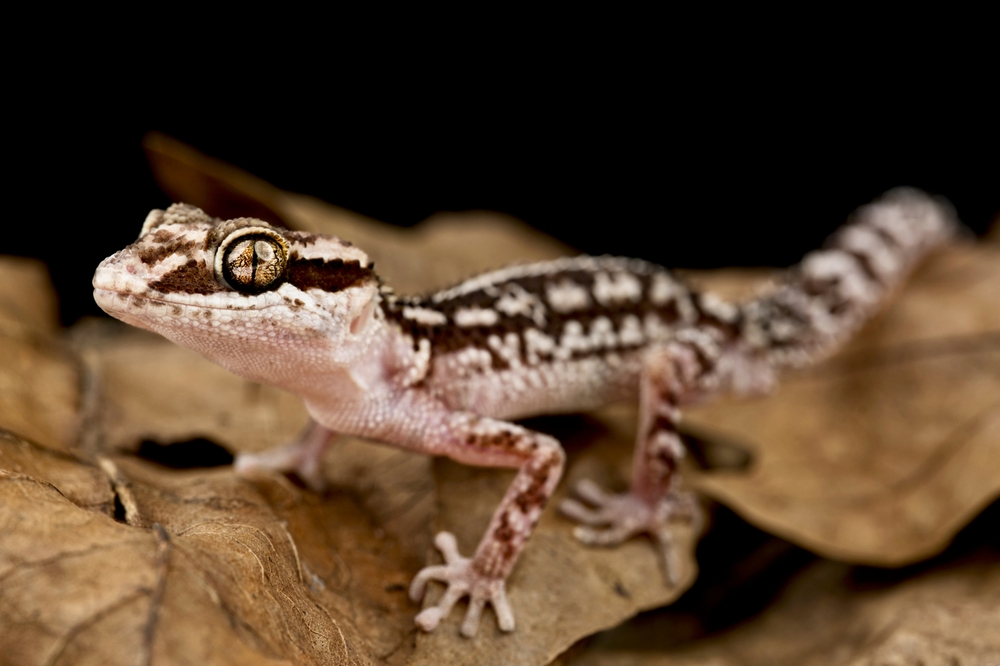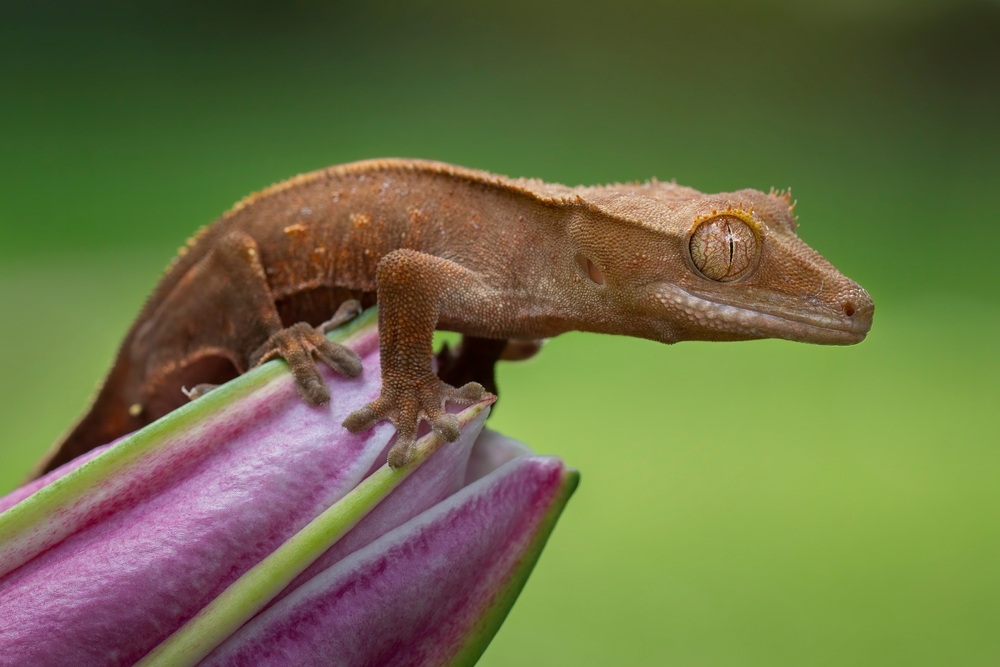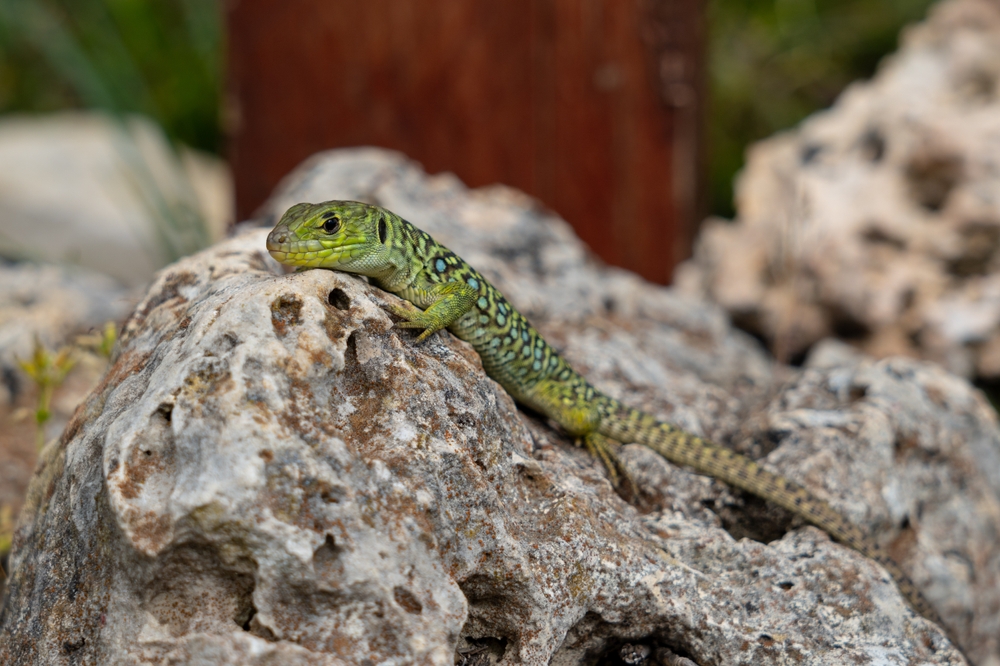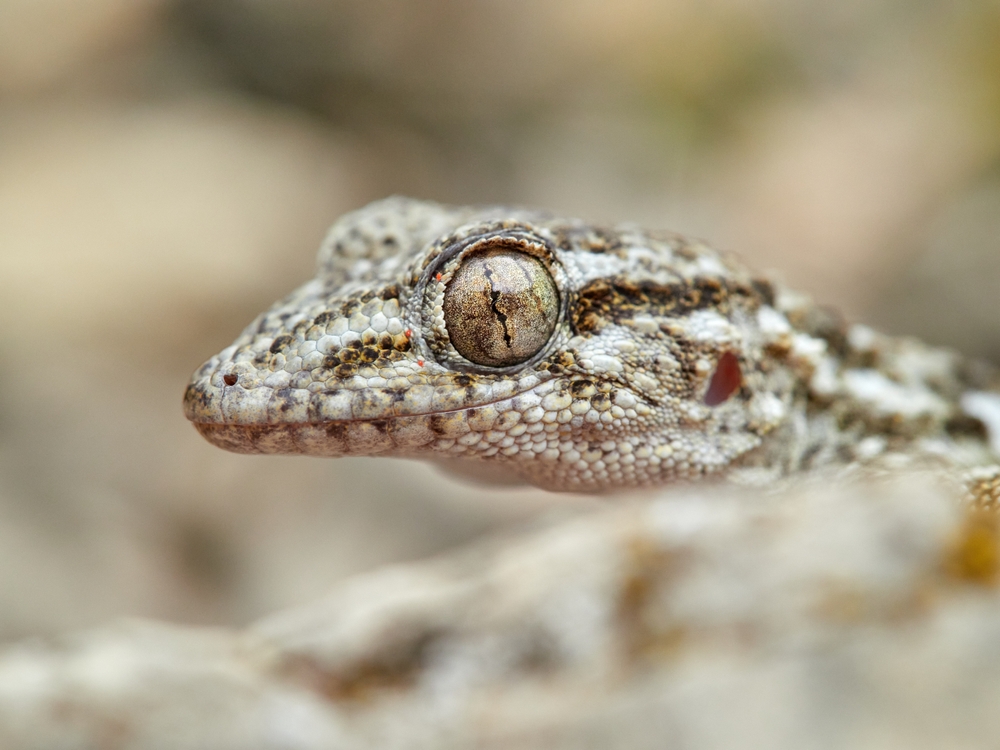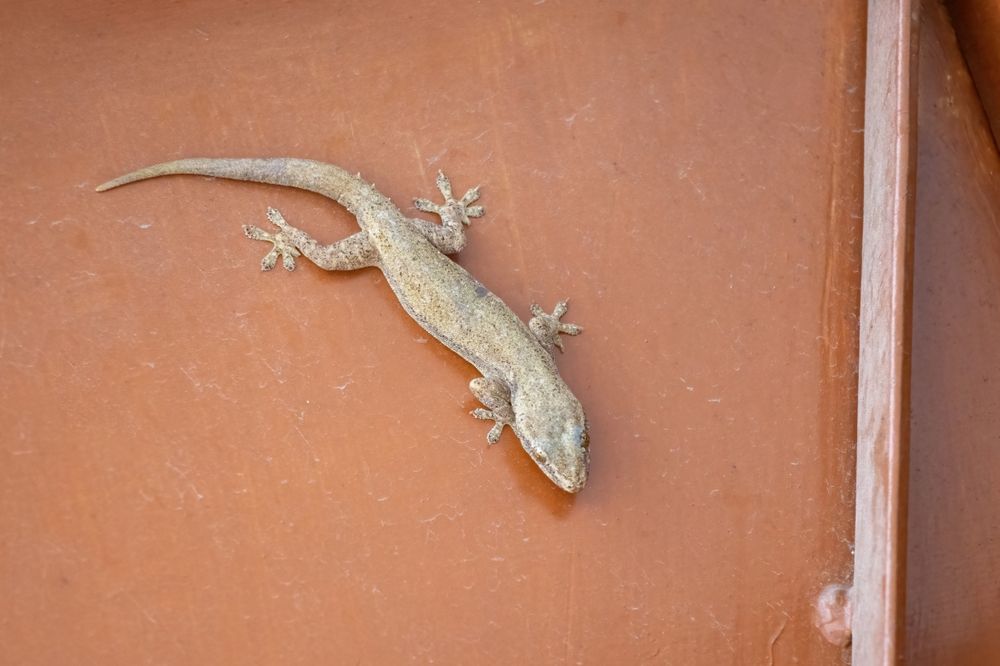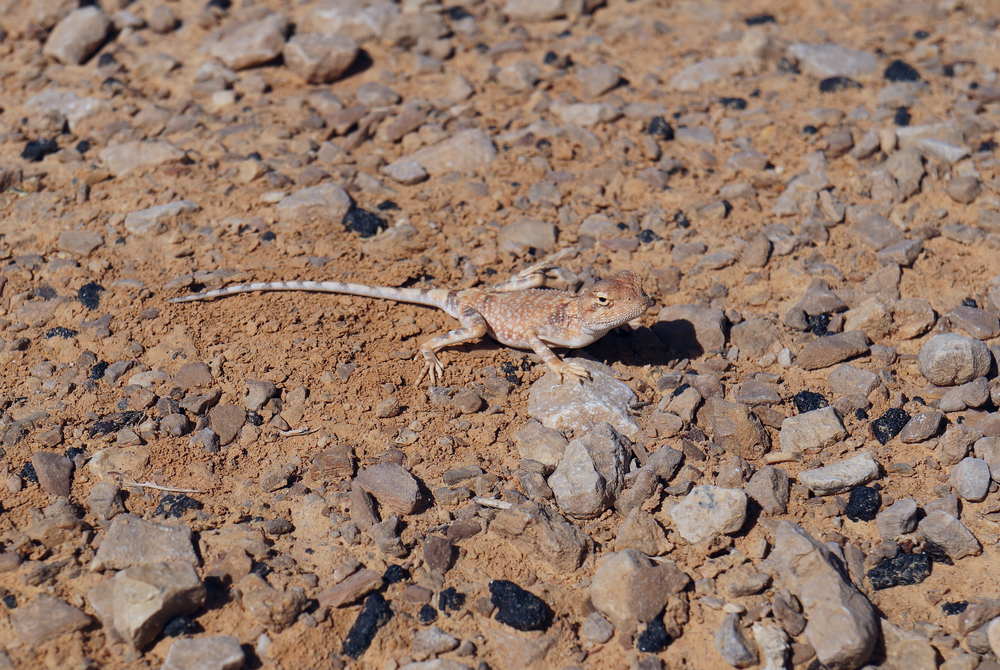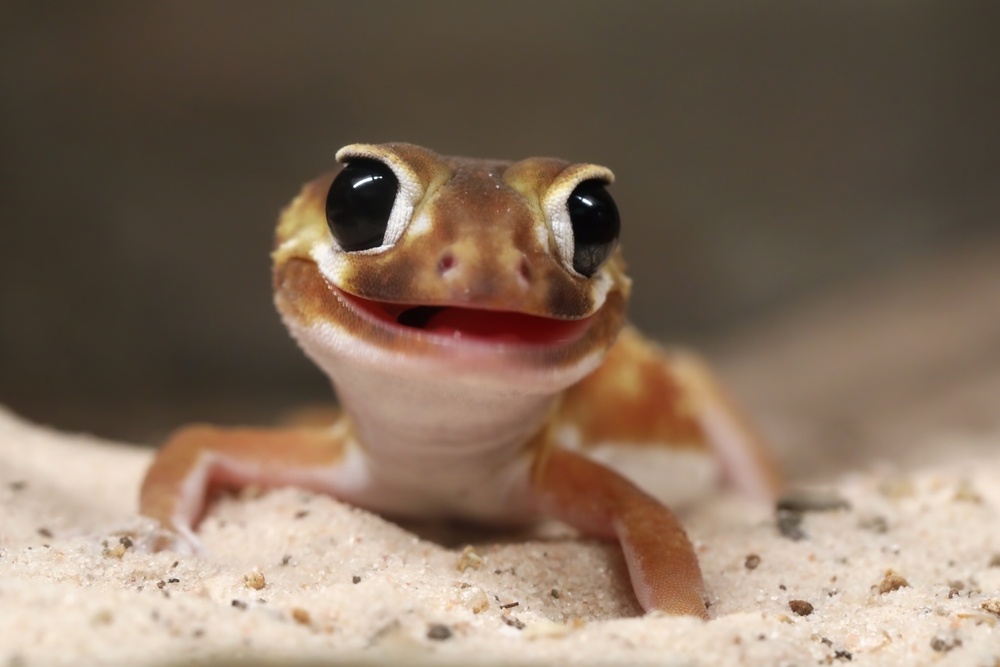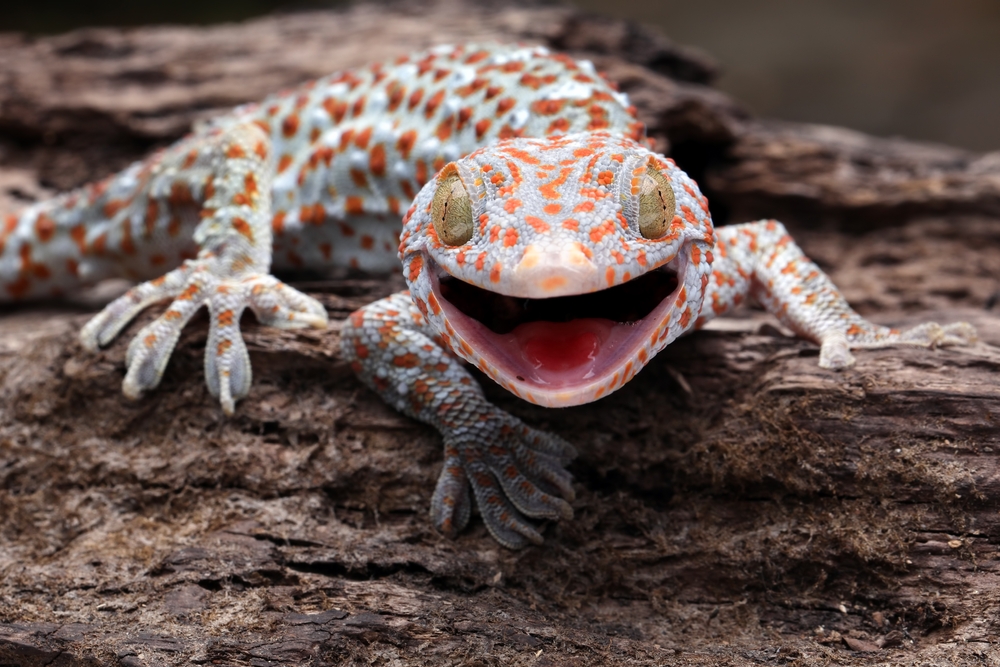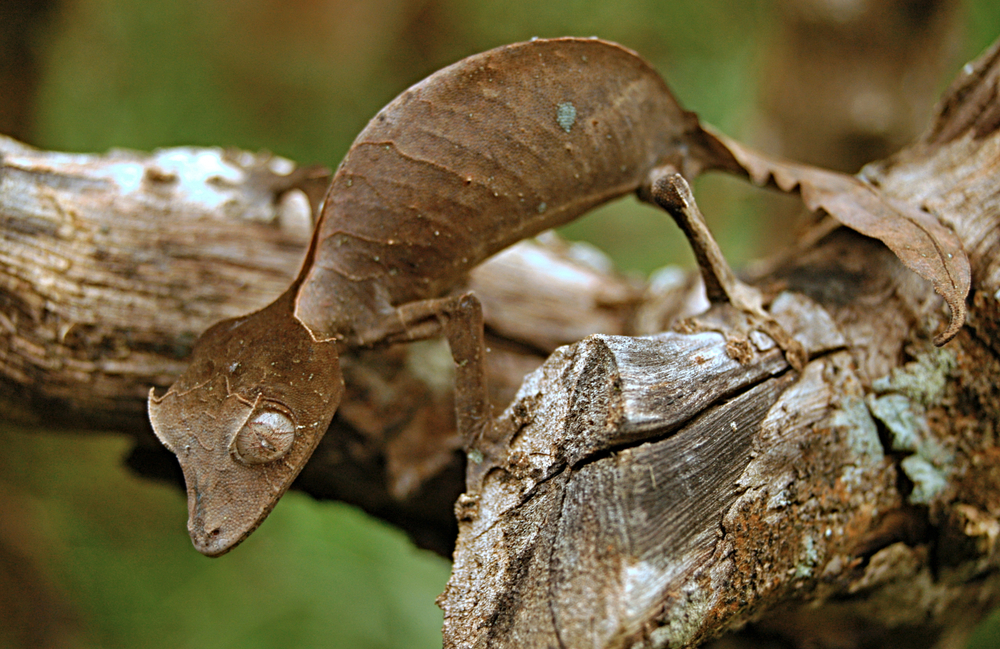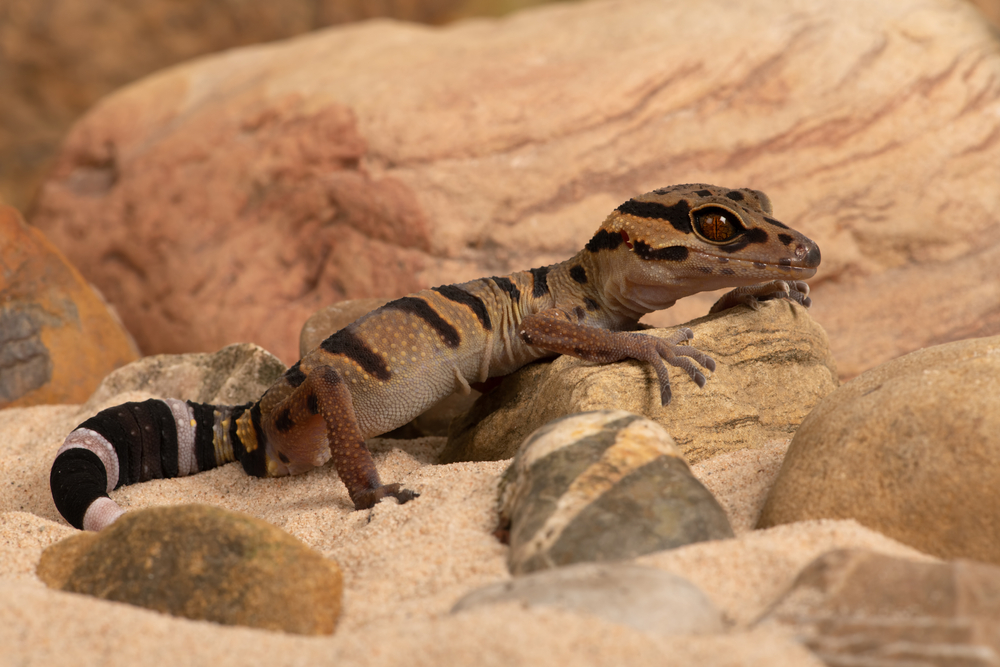Uniqueness
The Ocelot Gecko, also known as the Madagascar Ground Gecko, is a visually striking and behaviorally distinct lizard that stands out among geckos for its ground-dwelling habits, bold patterning, and calm temperament.
Ocellated Patterning:
Named for its resemblance to the ocelot cat, this gecko’s body is covered in ocellated (eye-like) markings and bands that shift from vibrant and banded in juveniles to more mottled in adults. Its cryptic coloration serves both camouflage and aesthetic appeal, especially among reptile enthusiasts.
Terrestrial Lifestyle:
Unlike many geckos that are arboreal or vertical climbers, the Ocelot gecko is strictly terrestrial, adapted to life on the forest floor. It lacks adhesive toe pads and instead has clawed toes suited for gripping sandy and rocky substrates.
Madagascar Endemic:
This species is endemic to Madagascar, meaning it is found nowhere else in the wild. It plays an important role in its native dry forest ecosystems, helping to control insect populations while serving as prey for larger animals.
Docile Disposition:
Known for being calm, tolerant of handling, and easy to observe, the Ocelot gecko is a favorite in the reptile pet trade. Unlike more defensive geckos, it rarely vocalizes or bites, making it ideal for beginners and researchers alike.
Fat-Storing Tail:
Its thick tail serves as a fat reserve, allowing it to survive through dry spells or food shortages. If threatened, the tail can be autotomized (self-detached) and later regenerated—a valuable survival strategy in the wild.
Popular in Captivity but Still Wild:
Although widely bred in captivity, wild populations are still impacted by habitat loss in Madagascar. Conservation of its native range is crucial, even though it is not currently considered threatened.
The Ocelot gecko’s unique appearance, ground-dwelling behavior, and gentle nature make it a standout species both ecologically and in herpetoculture.



































































